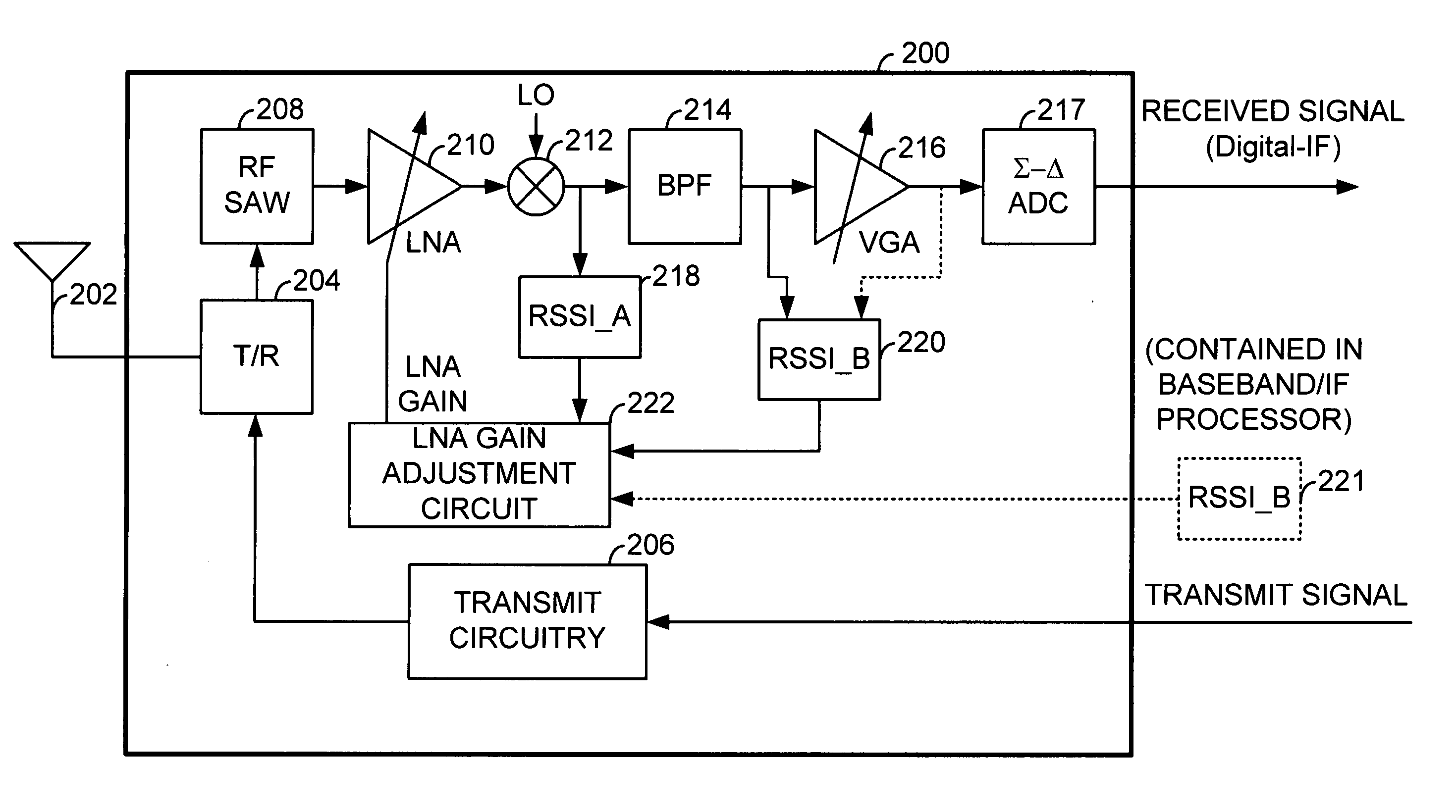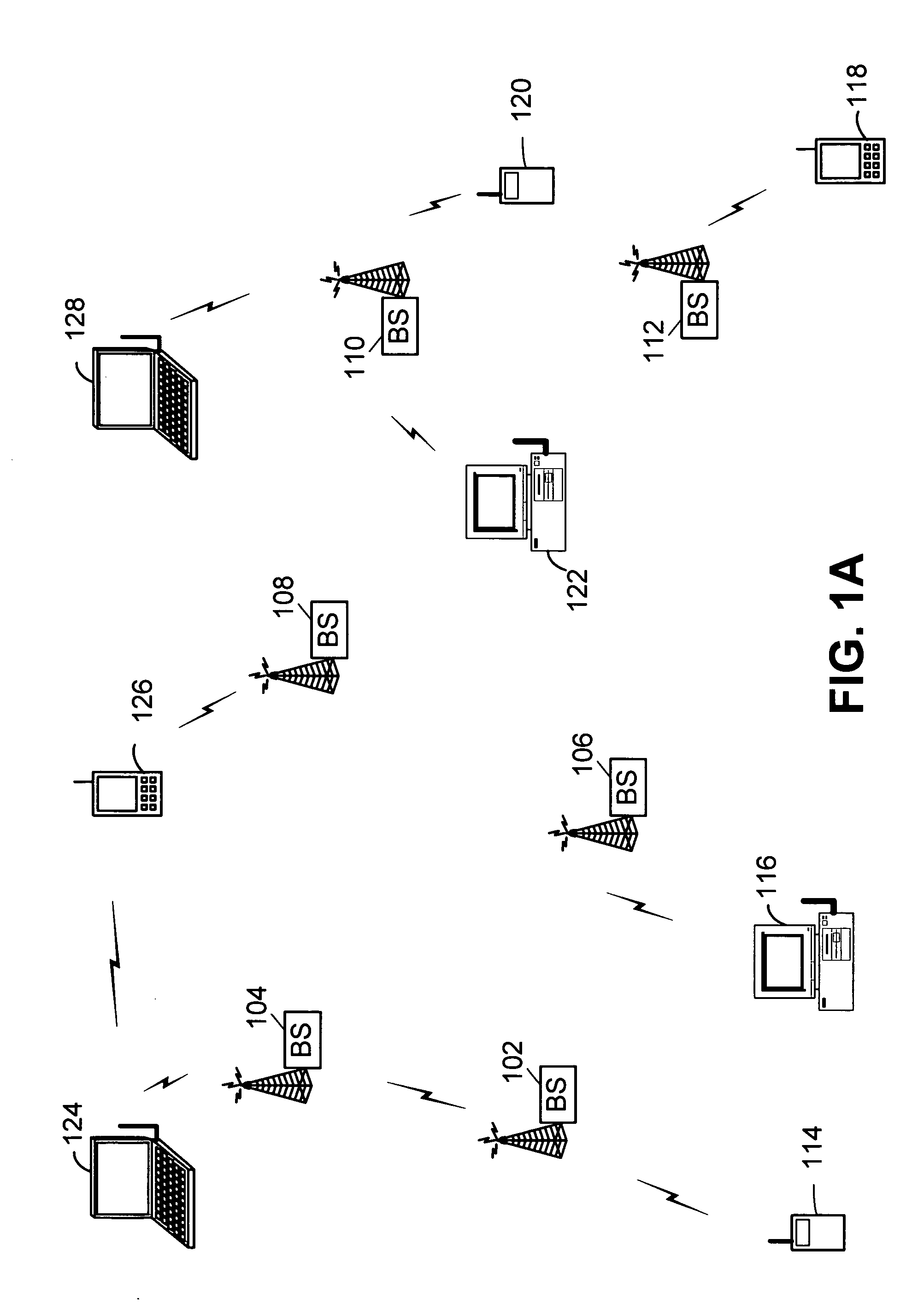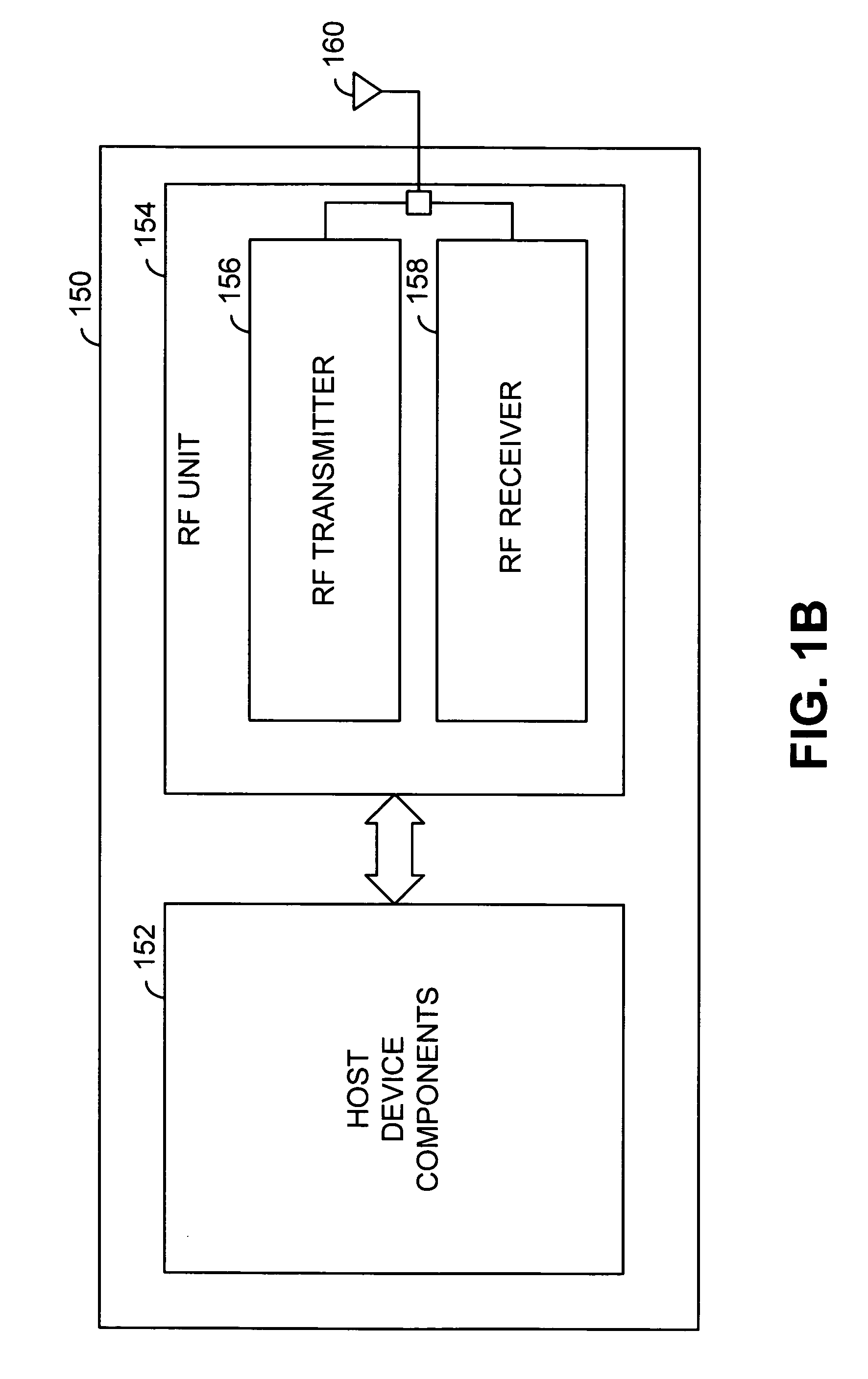Timing based LNA gain adjustment in an RF receiver to compensate for intermodulation interference
a receiver and intermodulation interference technology, applied in the field of wireless communication, can solve the problems of reducing the snr of the signal produced by the mixer, reducing the gain of the lna, and the inability to achieve the effect of setting the lna gain,
- Summary
- Abstract
- Description
- Claims
- Application Information
AI Technical Summary
Benefits of technology
Problems solved by technology
Method used
Image
Examples
Embodiment Construction
FIG. 1A is a system diagram illustrating a cellular system within which the present invention is deployed. The cellular system includes a plurality of base stations 102, 104, 106, 108, 110, and 112 that service wireless communications within respective cells / sectors. The cellular system services wireless communications for a plurality of wireless subscriber units. These wireless subscriber units include wireless handsets 114, 120, 118, and 126, mobile computers 124 and 128, and desktop computers 116 and 122. When wirelessly communicating, each of these subscriber units communicates with one (or more during handoff) of the base stations 102 through 112. Each of the subscriber units of FIG. 1A, both subscriber units and base stations includes a radio frequency (RF) unit.
The services provided by the cellular system include both voice service and data services. Such services are provided according to a cellular networking standard such as the GSM standard, the IS-136 standard, the 1XEV...
PUM
 Login to View More
Login to View More Abstract
Description
Claims
Application Information
 Login to View More
Login to View More - R&D
- Intellectual Property
- Life Sciences
- Materials
- Tech Scout
- Unparalleled Data Quality
- Higher Quality Content
- 60% Fewer Hallucinations
Browse by: Latest US Patents, China's latest patents, Technical Efficacy Thesaurus, Application Domain, Technology Topic, Popular Technical Reports.
© 2025 PatSnap. All rights reserved.Legal|Privacy policy|Modern Slavery Act Transparency Statement|Sitemap|About US| Contact US: help@patsnap.com



